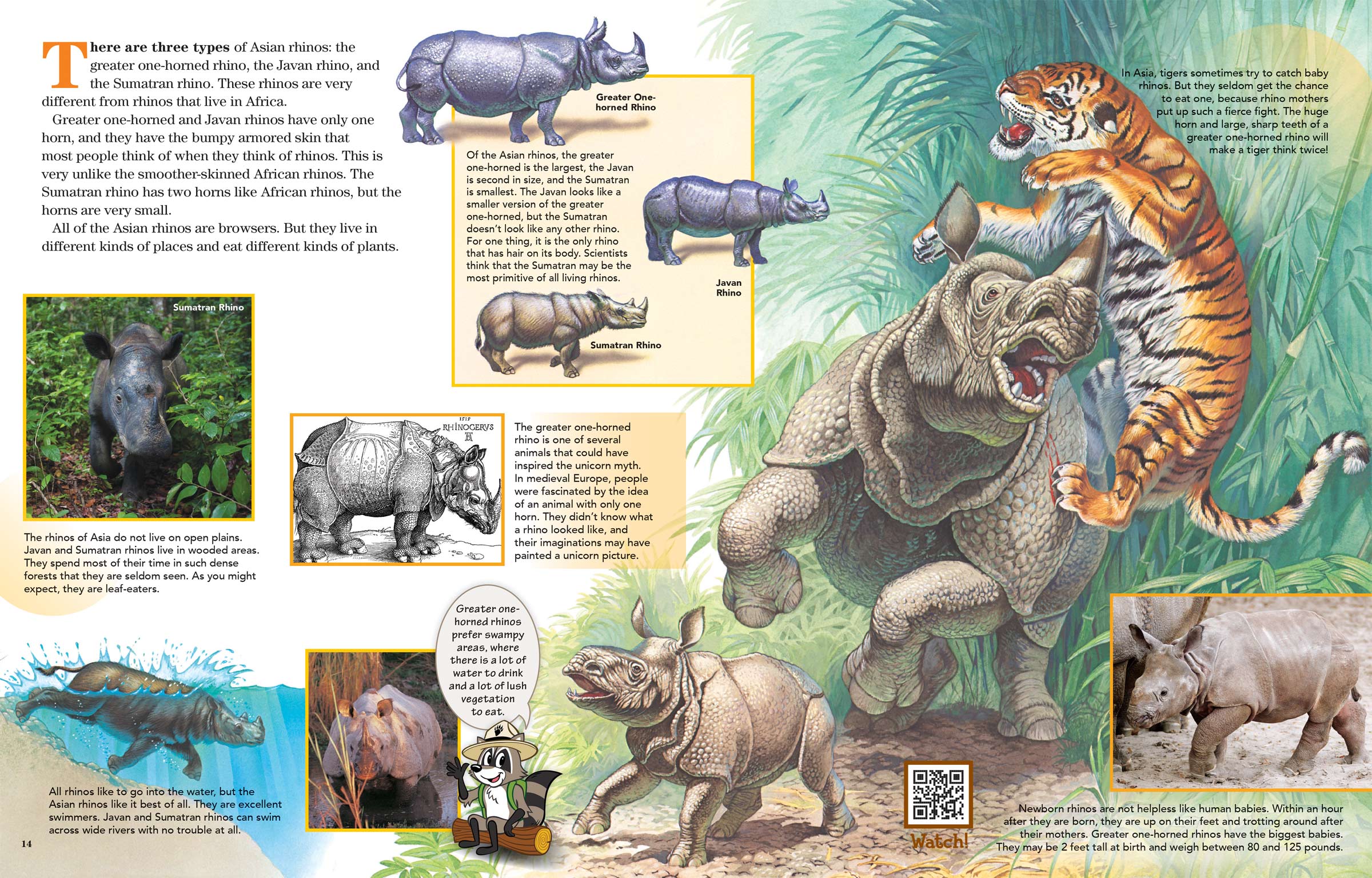
Asian Rhinos
ByThere are three types of Asian rhinos: the greater one-horned rhino, the Javan rhino, and the Sumatran rhino. These rhinos are very different from rhinos that live in Africa.
Greater one-horned and Javan rhinos have only one horn, and they have the bumpy armored skin that most people think of when they think of rhinos. This is very unlike the smoother-skinned African rhinos. The Sumatran rhino has two horns like African rhinos, but the horns are very small.
All of the Asian rhinos are browsers. But they live in different kinds of places and eat different kinds of plants.
Of the Asian rhinos, the greater one-horned is the largest, the Javan is second in size, and the Sumatran is smallest. The Javan looks like a smaller version of the greater one-horned, but the Sumatran doesn’t look like any other rhino. For one thing, it is the only rhino that has hair on its body. Scientists think that the Sumatran may be the most primitive of all living rhinos.
The rhinos of Asia do not live on open plains. Javan and Sumatran rhinos live in wooded areas. They spend most of their time in such dense forests that they are seldom seen. As you might expect, they are leaf-eaters.
The greater one-horned rhino is one of several animals that could have inspired the unicorn myth. In medieval Europe, people were fascinated by the idea of an animal with only one horn. They didn’t know what a rhino looked like, and their imaginations may have painted a unicorn picture.
All rhinos like to go into the water, but the Asian rhinos like it best of all. They are excellent swimmers. Greater one-horned and Sumatran rhinos can swim across wide rivers with no trouble at all.
Greater one-horned rhinos prefer swampy areas, where there is a lot of water to drink and a lot of lush vegetation to eat.
 In Asia, tigers sometimes try to catch baby rhinos. But they seldom get the chance to eat one, because rhino mothers put up such a fierce fight. The huge horn and large, sharp teeth of a greater one-horned rhino will make a tiger think twice!
In Asia, tigers sometimes try to catch baby rhinos. But they seldom get the chance to eat one, because rhino mothers put up such a fierce fight. The huge horn and large, sharp teeth of a greater one-horned rhino will make a tiger think twice!
Newborn rhinos are not helpless like human babies. Within an hour after they are born, they are up on their feet and trotting around after their mothers. Greater one-horned rhinos have the biggest babies. They may be 2 feet tall at birth and weigh between 80 and 125 pounds.

